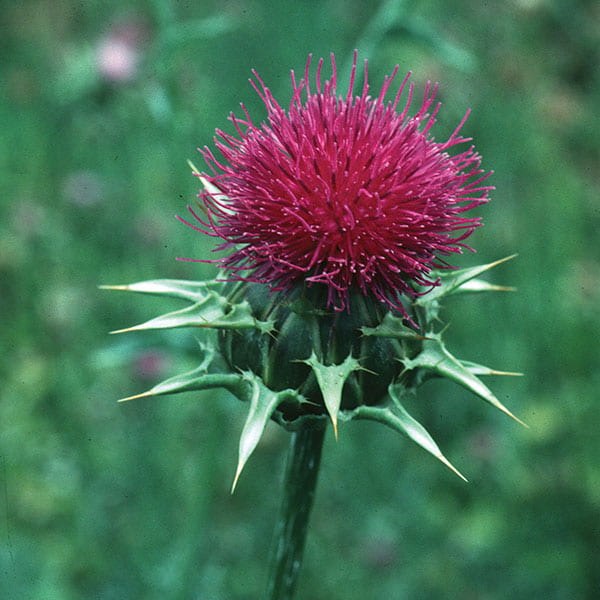Milk Thistle
Common names: Marian thistle, St. Mary's thistle, wild artichokeBackground
Milk thistle is the common name for Silybum marianum, a member of the daisy family native to the Mediterranean. The therapeutic uses of milk thistle have been recognized for at least 2000 years. It was first used for liver and gallbladder disorders just as it is today. Silymarin, the biologically active flavonoid complex, is extracted from the seed of the plant.
Uses
Milk thistle has been advocated for the prophylaxis and treatment of liver disorders including cirrhosis and alcoholic, viral, and toxic hepatitis. Although inconclusive, available evidence suggests that milk thistle is potentially useful in some clinical situations. In a randomized controlled trial, reported that silymarin significantly improved survival in patients with cirrhosis (4-year survival of 58% in treatment group and 39% in placebo group). The subgroup analysis in this study indicted that silymarin was effective in patients with alcoholic cirrhosis and in patients whose liver disease was initially rated a Child’s Class A. Several clinical trials demonstrated that silymarin significantly lowers serum liver enzyme and bilirubin levels in patients with cirrhosis and hepatitis. In other controlled trials, however, silymarin did not improve survival or retard progression of disease in patients with alcoholic cirrhosis. Milk thistle is effective in decreasing mortality caused by the ingestion of Amanita phalloides, the highly hepatotoxic deathcap mushroom.
Phytochemistry and pharmacology
The active compounds in milk thistle are the flavonolignane isomers, silybin, silidianin, and silichristine. Of these, silybin is the most prevalent and biologically active. Multiple mechanisms explain the hepatoprotective effects of milk thistle. Silymarin acts as an antioxidant, scavenging free radicals and inhibiting free radical production and lipid peroxidation. Silymarin may protect against hepatotoxins by altering cell membrane permeability and receptor antagonism. Data from in vitro studies suggest that silymarin may facilitate hepatocyte regeneration by effecting DNA expression.
Only 20-50% of silymarin is absorbed from the gastrointestinal tract. Peak plasma concentrations occur 2-4 hr after an oral dose, and the elimination half-life is approximately 6 hr.
Safety
Milk thistle is generally safe. The most frequently reported adverse effects are nausea and vomiting, urticaria, pruritis, and dyspepsia. Allergic reactions may stem from the development of IgE and IgG antibodies. No drug interactions with milk thistle have been reported.
Use during pregnancy or by nursing mothers is not recommended.
Preparations and dosage
Commerical extracts of milk thistle are typically standardized to a silymarin content of 70-80%. Tea preparations are not recommended because silymarin is poorly water soluble. The recommended dosage is 100-200 mg of silymarin twice daily.

